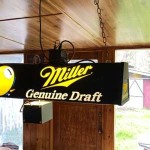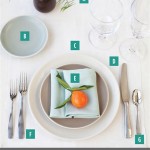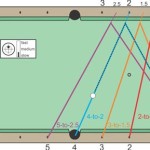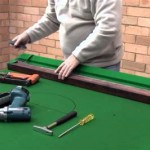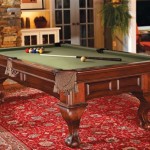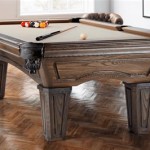End Table: A Fusion of Metal Legs and Wood Top
End tables serve as versatile and essential pieces of furniture in various living spaces. Their functionality extends beyond mere decoration, offering a convenient surface for lamps, drinks, books, and other personal items. Among the diverse range of end table designs, the combination of metal legs and a wood top stands out for its aesthetic appeal, durability, and adaptability to different interior design styles. This article explores the key characteristics, benefits, design considerations, and maintenance aspects associated with end tables featuring metal legs and wood tops.
Durability and Stability
The construction of an end table using metal legs and a wood top often prioritizes durability and stability. Metal, particularly steel or iron, provides a robust framework capable of withstanding significant weight. This inherent strength translates into a stable base, preventing the table from wobbling or tipping over, even when loaded with items. The rigidity of the metal legs contributes to the overall structural integrity of the table, ensuring its longevity and resistance to wear and tear.
The choice of wood for the tabletop further enhances the durability of the end table. Hardwoods, such as oak, maple, and walnut, are known for their density and resistance to scratches and dents. These types of wood can withstand daily use and maintain their appearance for years. Softwoods, like pine or fir, can also be used, often with protective finishes to improve their durability. The thickness of the wood also plays a crucial role; thicker tabletops are generally more durable and less prone to warping or cracking under pressure. Proper joint construction, where the wood top is securely attached to the metal legs, is paramount for long-term stability and weight-bearing capacity.
The combination of a strong metal frame and a durable wood top results in an end table that can withstand the rigors of daily use. This makes it a worthwhile investment compared to tables made from less durable materials like particleboard or plastic. The inherent strength of the materials also means that these tables are less likely to require frequent repairs or replacement, contributing to their overall cost-effectiveness over their lifespan.
Aesthetic Versatility
End tables with metal legs and wood tops offer considerable aesthetic versatility, allowing them to complement a wide range of interior design styles. The contrast between the cool, industrial feel of metal and the warm, natural texture of wood creates a visually appealing balance that can be adapted to both modern and traditional settings. The specific style of the metal legs and the type of wood used can further influence the overall aesthetic of the table.
Metal legs can be formed into various shapes and finishes. Simple, straight legs provide a minimalist and contemporary look, while more elaborate designs, such as hairpin legs or geometric patterns, add visual interest and character. The finish of the metal can also affect the table's aesthetic. Matte black or brushed steel finishes evoke a modern industrial vibe, while polished chrome or brass legs offer a more glamorous and sophisticated appearance. Powder coating is a common finishing method that provides durability and a wide range of color options.
The choice of wood for the tabletop also contributes significantly to the table's aesthetic. Different wood species possess unique grain patterns and color variations. Oak offers a classic and versatile look, while walnut provides a richer, more luxurious feel. Lighter woods like maple or birch can brighten up a space, while darker woods like mahogany create a sense of formality. The finish applied to the wood also influences its appearance. A natural finish highlights the wood's inherent beauty, while stains can be used to alter its color and enhance its grain pattern. Painted wood tops offer the opportunity to introduce a pop of color or coordinate with existing decor.
The combination of various metal leg styles and wood top finishes allows for a high degree of customization, ensuring that the end table seamlessly integrates into any room's design scheme. Whether the goal is to achieve a rustic farmhouse look, a sleek modern aesthetic, or a classic traditional feel, the versatility of this design ensures a harmonious blend with the surrounding furniture and decor.
Functional Design Considerations
Beyond durability and aesthetics, functional design considerations are crucial when selecting an end table with metal legs and a wood top. The size, shape, and features of the table should be appropriate for its intended use and the dimensions of the room. Considerations include the table's height relative to the surrounding seating, the surface area provided by the tabletop, and the presence of any additional storage or display options.
The height of the end table is particularly important. Ideally, the tabletop should be at approximately the same height as the arm of the sofa or chair beside which it is placed. This allows for easy access to items placed on the table. If the table is too low, it can be inconvenient to reach for drinks or books; if it is too high, it can feel awkward and intrusive. The size of the tabletop should also be sufficient to accommodate the intended items. A small table might be suitable for holding a lamp and a small drink, while a larger table might be necessary for holding books, plants, or decorative objects.
The shape of the end table can also influence its functionality. Square or rectangular tables provide a more traditional and symmetrical look and are well-suited for placing against a wall or beside a sofa. Round or oval tables can soften the lines of a room and are often used in smaller spaces where they can be easily maneuvered around. The shape of the metal legs can also impact functionality. Legs that are splayed outwards can provide greater stability, while legs that are placed closer together can create a more minimalist appearance.
Some end tables with metal legs and wood tops incorporate additional features, such as shelves, drawers, or storage compartments. These features can enhance the table's functionality by providing additional space for storing books, magazines, remote controls, or other items. Drawers can help keep the tabletop clutter-free, while shelves can be used to display decorative objects or store items that are frequently used. The inclusion of these features should be carefully considered based on the individual needs and preferences of the user.
Maintenance and Care
Proper maintenance and care are essential for preserving the appearance and longevity of an end table with metal legs and a wood top. The specific cleaning and maintenance requirements will depend on the type of metal and wood used, as well as the finishes applied. Regular cleaning and preventative measures can help protect the table from damage and ensure that it remains a beautiful and functional piece of furniture for years to come.
For metal legs, regular dusting with a soft cloth is usually sufficient to remove dirt and debris. For more stubborn stains or fingerprints, a mild soap and water solution can be used. Avoid using abrasive cleaners or scouring pads, as these can scratch the metal finish. For metal legs with a powder-coated finish, a damp cloth is usually sufficient for cleaning purposes. Polished metal legs may require occasional polishing to maintain their shine. It is important to dry the metal legs thoroughly after cleaning to prevent rust or corrosion.
The wood tabletop requires specific care to protect it from scratches, stains, and water damage. Regular dusting with a soft cloth is essential to remove dust and debris. Spills should be cleaned up immediately to prevent staining. Avoid placing hot items directly on the wood surface, as this can damage the finish. Use coasters under drinks to prevent water rings. For wood tabletops with a protective finish, such as varnish or polyurethane, a damp cloth can be used to clean the surface. Avoid using harsh cleaners or solvents, as these can damage the finish. For wood tabletops with an oil or wax finish, occasional reapplication of the finish may be necessary to maintain its protective properties.
In addition to regular cleaning, preventative measures can help protect the end table from damage. Avoid placing heavy objects on the table that could potentially overload the metal legs or scratch the wood surface. Use felt pads under the legs to prevent scratching of floors. Avoid exposing the table to excessive moisture or sunlight, as these can damage the wood or metal finish. By following these simple maintenance and care guidelines, the end table can be kept in excellent condition for many years.

Luxenhome Natural Faux Wood Top With Black Metal Legs Side Table Brown Target

Small Side Table With Petrified Wood Top And Metal Legs Bases

Metal Coffee Table Legs Spider Steel Modern Base Industrial For Live Edge Wood Xsavi 60

Coffee Table Set With Wooden Top And Metal Legs Wood Black Furnberry

Metal X Side Table With Wood Top Large

Bench Legs H16 Metal Coffee Table 123 Udo Only Furniture Set Of 4 Pcs Flowyline Steel Design For Live Edge Top

Coffee Table Set With Wood Top And Metal Legs 3 Pc Walnut Furnberry

Copeland Furniture Natural Hardwood From Vermont Essentials Rectangle End Table

Trigo Solid Wood Side Table With Metal Leg Natural White Furnituredirect Com My

Litton Lane 16 In Brown Medium Round Wood End Table With Black Metal Hairpin Legs 56982 The Home Depot
Related Posts

